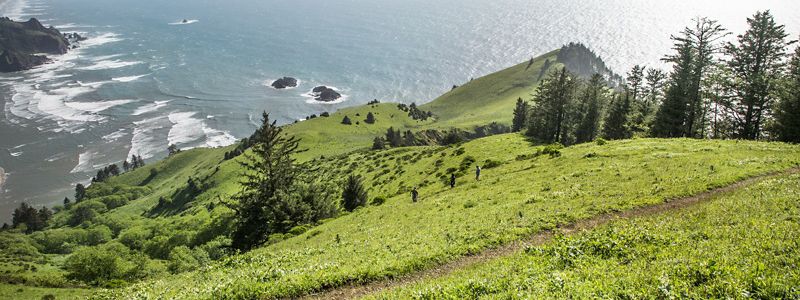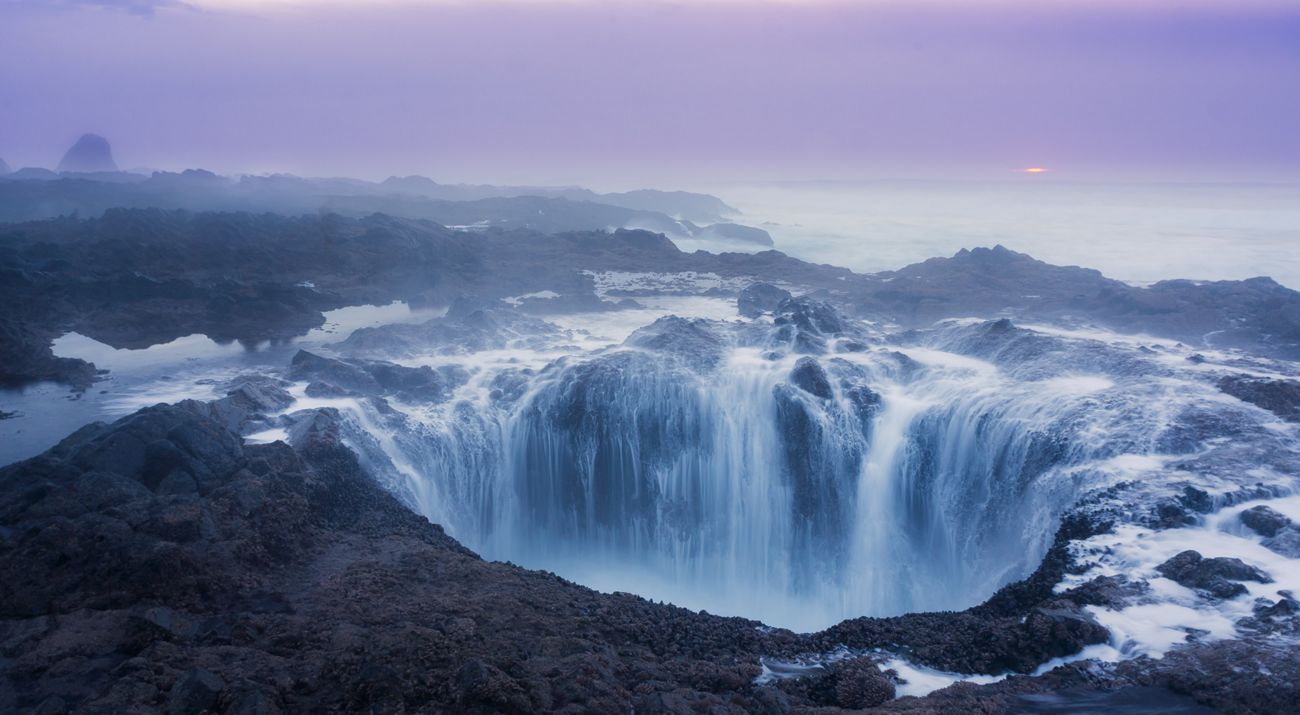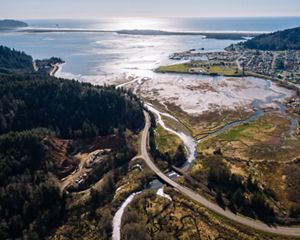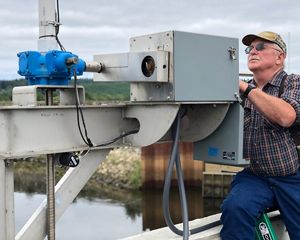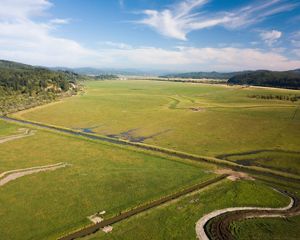The Oregon Coast has sustained and inspired communities and visitors for centuries.
Those who have stood upon its rocky cliffs find themselves transfixed and transformed. But this beautiful backdrop provides value far beyond the views.
Oregon Marine Reserves (1:05)
Celebrating Oregon’s Marine Reserves (1:05)
Just off the Oregon Coast lies an area of tremendous upwelling, where cool water from deep in the ocean is drawn closer to the surface, bringing with it a tremendous wealth of nutrients and biodiversity. This process, combined with the broad range of underwater terrain and connections to vast networks of inland rivers, makes the Oregon Coast a true natural treasure.
Here are five ways The Nature Conservancy is protecting the Oregon Coast:
1. Preserving Underwater Habitat
One of the most effective tools to ensure a more sustainable future for our oceans is the creation of Marine Reserves and Marine Protected Areas (MPAs). These “underwater nature preserves” put nature first by limiting or restricting human activity in order to study the results of conservation efforts over time. They also provide refuge for many species and an opportunity for less abundant populations to recover.
In 2013, TNC was a part of the effort to create five marine reserves off the Oregon Coast to serve as living laboratories. Research happening across these five sites will inform how to best manage our coastal waters and resources in the future.
More About Marine Protected Areas in Oregon
Finding Sea Stars on the Oregon Coast (2:22)
Finding Sea Stars on the Oregon Coast (2:22)
2. Tracking Climate Impacts
The ocean acts as a sponge for carbon dioxide, soaking up more than one-quarter of the global greenhouse gas emissions. In such high quantities, this creates tremendous problems for marine life by warming and acidifying the water.
Our oceans are 30% more acidic today than they were at the beginning of the industrial revolution, just 200 years ago. These lethal changes are limiting the ability of oysters, clams, Dungeness crab, corals and other shellfish to create shells and will dramatically impact the species that feed upon them, including otters, salmon, whales and more.
Our scientists have been collecting critical data to determine how the chemistry of the ocean is changing over time in order to devise plans for adaptation. Through continued research on climate impacts and adaptations, TNC is able to better develop strategies for protection and restoration.
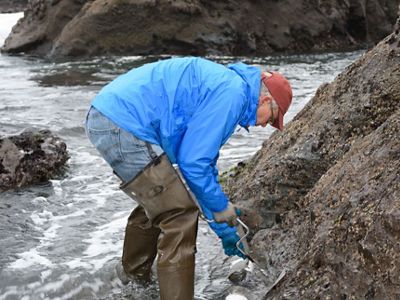
3. Securing Sustainable Fisheries
Due to overfishing and the current and potential impacts of climate change, the future of Oregon’s fisheries—and coastal livelihoods that depend on them—are at risk. Our scientists have been working closely with coastal fishermen, managers and agencies to create and implement fishery management plans and climate change scenario plans that would help secure the future of fishing communities, Dungeness crab and other important species.
We’ve also been working hand-in-hand with fishers to revolutionize the way fisheries data is collected. Not only will these technologies make it easier to accurately report which fish are caught where, but the aggregation of information from all boats will present a more complete picture of the overall health and behavior of entire fisheries. Armed with this knowledge, fishermen can better target more abundant species while allowing less abundant ones the opportunity to recover.
Oregon Sustainable Fisheries (4:11)
Oregon Sustainable Fisheries (4:11)
4. Protecting Estuaries and Coastal Wetlands
Estuaries are among the most productive and important ecosystems on Earth. They serve as the nurseries for dozens of species of fish, clams and oysters while also providing critical habitat for migratory birds. In healthy estuaries, juvenile salmon find refuge and take time to grow strong enough to survive the journey ahead. In addition to their critical role in sustaining healthy fisheries, estuaries protect communities by absorbing storm surges and serve as natural filters, cleaning water on the way to the sea while dense seagrasses store vast amounts of carbon.
For all their many benefits, these wetlands, marshes and bays are also among the most threatened habitats. Historically, Oregon had over 228,000 acres of estuarine habitats; today only 17% of our tidal wetland habitats remain in high-quality condition. Through protection and major restoration projects, such as our work on the Coquille River and the Kilchis estuary near Tillamook, our goal is to increase the acres of tidal wetlands to 25% of their historic acreage by 2021.
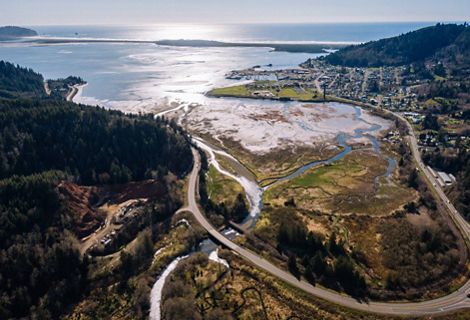
Why Do Estuaries Matter?
Estuaries, where freshwater and saltwater meet, are ecologically critical habitats. Here in Oregon, we’re working to restore these places for people and nature.
5. Changing Tide Gates to Save Salmon
Tide gates, devices used to control tidal river water, are used by farmers and ranchers to provide dry agriculture and pasture land in areas that would otherwise be too wet. However, failing tide gates also block fish passage. In nearly all of Oregon’s estuaries, from the Columbia River to the Coquille River on the South Coast, tide gate infrastructure is in disrepair, not meeting the needs of farmers and ranchers and not providing sufficient access to habitat many fish need to thrive.
Working with many partners, we installed innovative new tide gates at Winter Lake on the Coquille River. These provide dry pastures for grazing in the summer, while also allowing them to be flooded for juvenile salmon in the winter months when cattle are not using the land. The impacts have been remarkable. Not only have the number of juvenile salmon dramatically increased, but the additional time in these wetlands means the fish are reaching the ocean at twice the size of those prior to the improvements, dramatically increasing their survival rates.
But we’ve got a lot more work to do. There are between 1,000 and 1,500 tide gates in estuaries along the Oregon Coast and in waters off the Columbia River that may be negatively impacting fish passage and juvenile salmon habitat. We are currently evaluating which projects will produce the greatest returns.
Love the Oregon coast too?
Keep up on our Oregon work when you join our email list.
